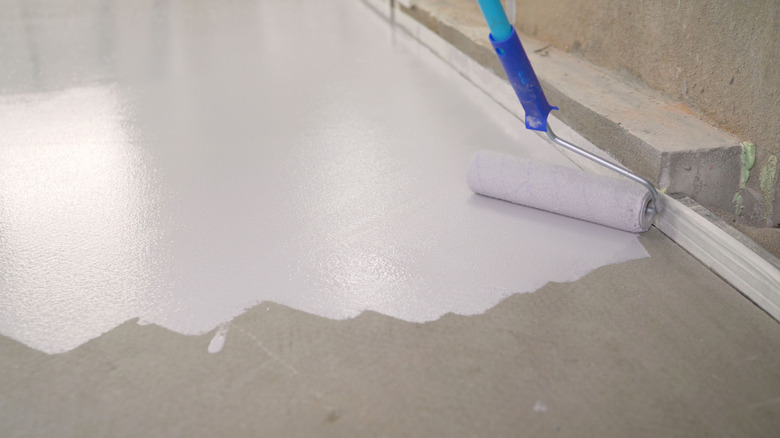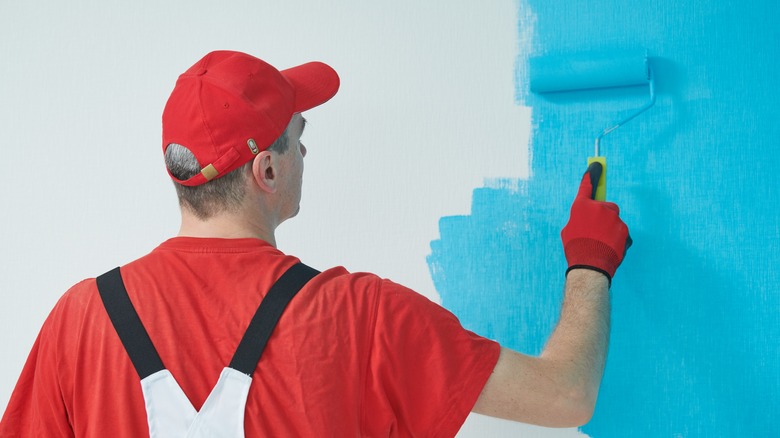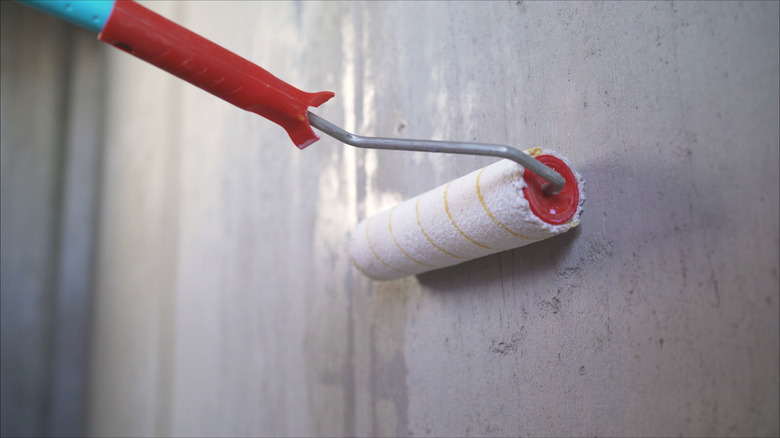How Many Coats Of Primer Should You Really Apply?
Whether or not you've ever painted a wall, door, or other surfaces, you've probably heard of paint primer — but what purpose does it serve? Applying primer before paint fills in any pores in the wall, making it a smoother surface for the paint. It also gives the paint something to stick to, according to MB Jesse Painting. Without a primer, your wall would look lumpy and porous, so it's crucial you use one before you lay down your color. Different textures and materials require certain types of primer as well, explains The Paint Shed.
For example, if you were to paint a wall that's never been touched with a coat of paint, you would choose a primer explicitly created for that surface. The question is, once you've found the correct primer, how many coats do you need before you can start painting? This also depends on the type of wall you're working on — let's take a look.
White or colored walls
It comes as no surprise that white is an easy color to repaint over. Because of this, Five Star Painting says you will usually only need one coat of primer to get the job done. However, you're going to have to apply more coats when working with surfaces that have been painted a darker color. Five Star Painting explains that using a primer before covering a dark-colored wall with a lighter paint will lower the saturation of the darker color, making it easier to conceal. This will often take about three or more coats.
Once the primer has successfully covered the paint underneath, you don't need to apply anymore, says Kilz. When painting over a light color with another light shade, less paint is necessary. Using a primer is basically like coloring — using a black marker to cover a light blue square requires a lot less work than if the situation was reversed.
Drywall or unfinished wood
In order to properly prime new drywall, you'll need at least one coat of primer, even if you think the wall looks fine without it. Just because the wall has never been painted doesn't mean you should skip out on primer, it's still necessary for any paint job. Damaged or repaired drywall, on the other hand, is going to need two layers or more, according to Five Star Painting. Drywall is considered damaged if it shows signs of discoloration, blemishes, bulges, or mold, Jenkins Restorations explains. Discoloration can't be concealed with just one coat or primer, which is why you may need two or three.
Painting any type of wood that hasn't been stained or finished, it's going to require several coats of primer — specifically, one made of latex or oil-based, Vintage MillWerks states. When using oil-based primers, once you have applied the first layer, make sure the entire surface is dry before adding a second coat.


